Our Vineyard
The Alsace Region
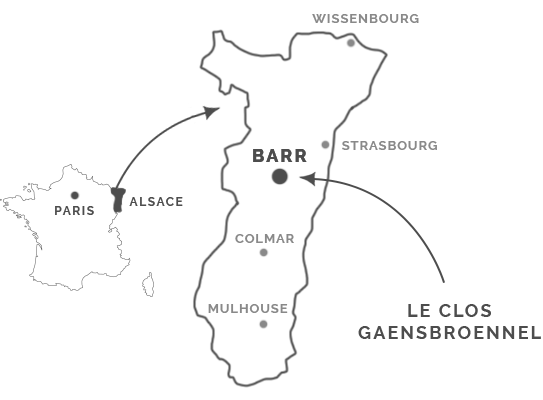
The Alsatian vineyard spans from the the Vosges in eastern France to the Black Forest in Germany, covering over 15,500 hectares from north to south. Comprised of around 300 vineyards across 120km of land, the region has been cultivating its sacred vines for over 2,000 years, making it one of the oldest wine regions in the world. The renowned Route des Vins d'Alsace, France's oldest wine route, is a picturesque way to discover the unique landscape of the Alsace region, from its elaborate châteaux to its signature half-timbered houses. You may even encounter some storks along the way!
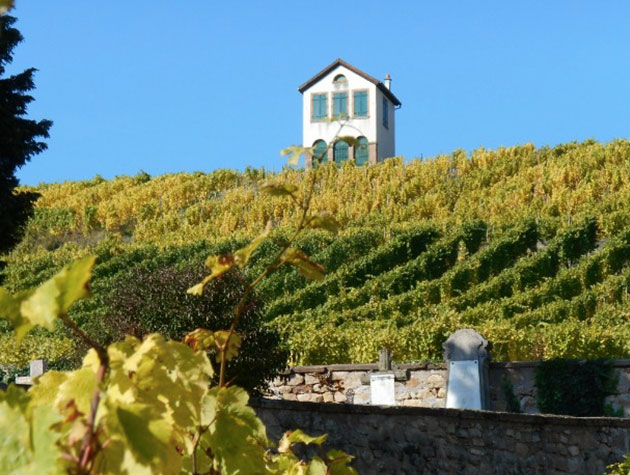
Climate
The Willm vineyard is located in the Barr region of northern Alsace at an altitude of 200-400 meters, extending from the mountainous base of the Vosges to the plains of Alsace and the Rhine. Bordered by the Vosges Mountains to the west, the Barr hillsides benefit from a dry and sunny microclimate thanks to their south-southeast exposure, optimal for cultivating the vines. The fluctuation between warm days and cool nights in autumn is conducive to a slow, prolonged grape maturation.
Soils
Our diverse soils are a product of the region’s diverse landscape. The mountainous Vosges make way for smaller hills which stretch into various flatlands—just a few of about a dozen geological formations that comprise our region’s landscape. The vineyard itself consists primarily of granite and clay-limestone soils, while the coastal marine environment contributes to the terroir’s mineral-rich quality.
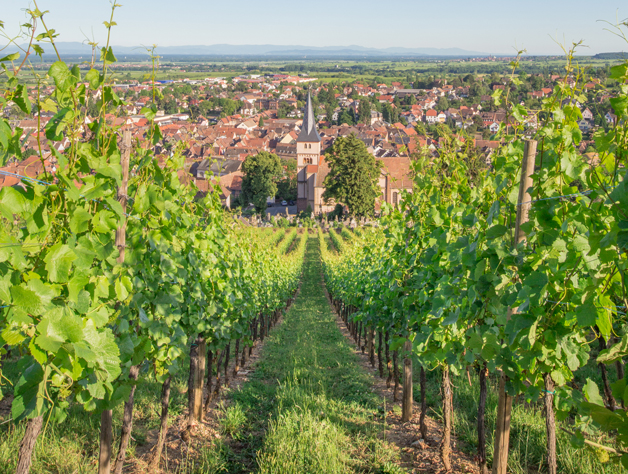
Grape Varieties
The Alsatian vineyard spans from the the Vosges in eastern France to the Black Forest in Germany, covering over 15,500 hectares from north to south. Comprised of around 300 vineyards across 120km of land, the region has been cultivating its sacred vines for over 2,000 years, making it one of the oldest wine regions in the world. The renowned Route des Vins d’Alsace, France’s oldest wine route, is a picturesque way to discover the unique landscape of the Alsace region, from its elaborate châteaux to its signature half-timbered houses. You may even encounter some storks along the way!
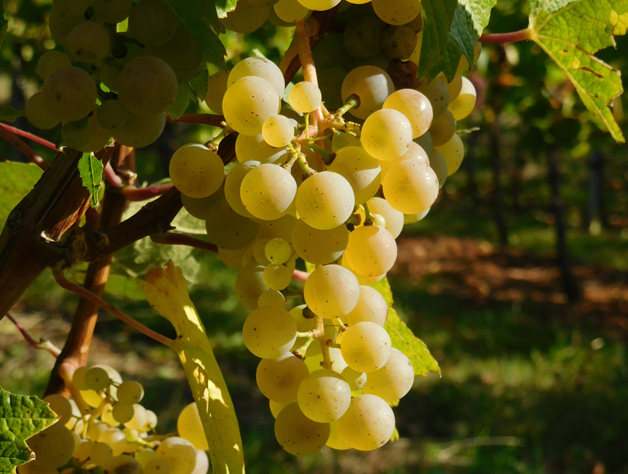
Sylvaner
This white grape variety offers a fresh, light-bodied wine with subtle fruit. These grapes often contain white flower aromas and are vibrant on the palate.
Riesling
This dry white grape is crystalline, sophisticated and fruity, boasting a delicate bouquet with mineral and floral nuances. Wines of this grape variety tend to keep very well. Known to be one of the best white grape varieties worldwide, this is the ultimate gastronomic wine.
Pinot Gris
Primarily used for the Grands Crus d’Alsace, this grey grape with white flesh makes for wines that are round on the palate with a long finish. This grape is known for its smoky aromas and develops a rich, savory character. Perfect when paired with flavorful dishes like duck breast fillet with peaches or lamb shanks with ginger and honey.
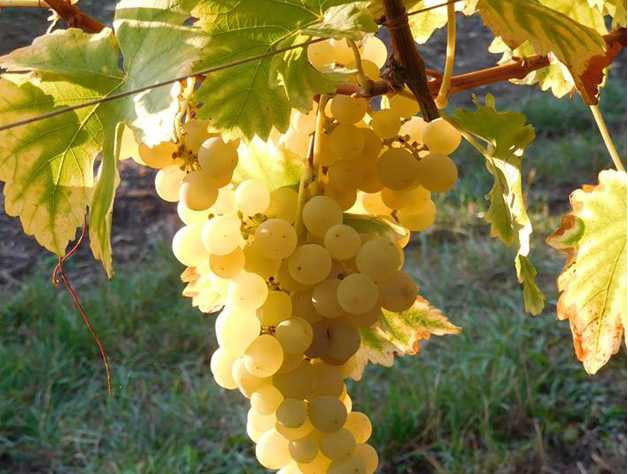
Muscat
This grape is highly aromatic with expressions of fresh fruit, often complemented by subtle, floral notes. Its unique, dry character distinguishes this variety from the sweet Muscat grapes of the South. Ideal when paired with an asparagus salad and scallops, and can offer a refreshing alternative to Riesling to accompany a seafood platter.
Pinot Blanc
At full maturity, this white grape variety often takes on a golden hue. These grapes make for a tender, delicate wine with a balance of freshness and acidity, both supple and full-bodied. This grape represents the mid-range of Alsatian wines, and pairs particularly well with jumbo vanilla shrimp.

Gewurztraminer
This emblematic grape variety is pink with white flesh and represents one of the grape varieties of the Grands Crus d’Alsace. The Gewurztraminer is prone to botrytis and allows for a selection of noble grapes during late harvest. Its wines are full-bodied and exuberant, powerful yet mellow. Its intense bouquet develops rich, fruity aromas such as passion fruit, exotic fruits like pineapple and litchi, floral notes, and spices such as pepper and cinnamon. This emblematic Alsatian wine reveals its complex aromas when paired with foie gras, strong cheeses and dark chocolat desserts.
Pinot Noir
This is the only Alsatian grape variety to produce a red or rosé wine. These wines are characterized by aromas of cherry, mixed berry, blackberry and red-currant, distinguishing them from other Alsatian varietals. Pinot Noir is served at room temperature or lightly cooled, and can accompany roast wild boar with dried fruit, or a fatty chicken dish with morel mushrooms.
